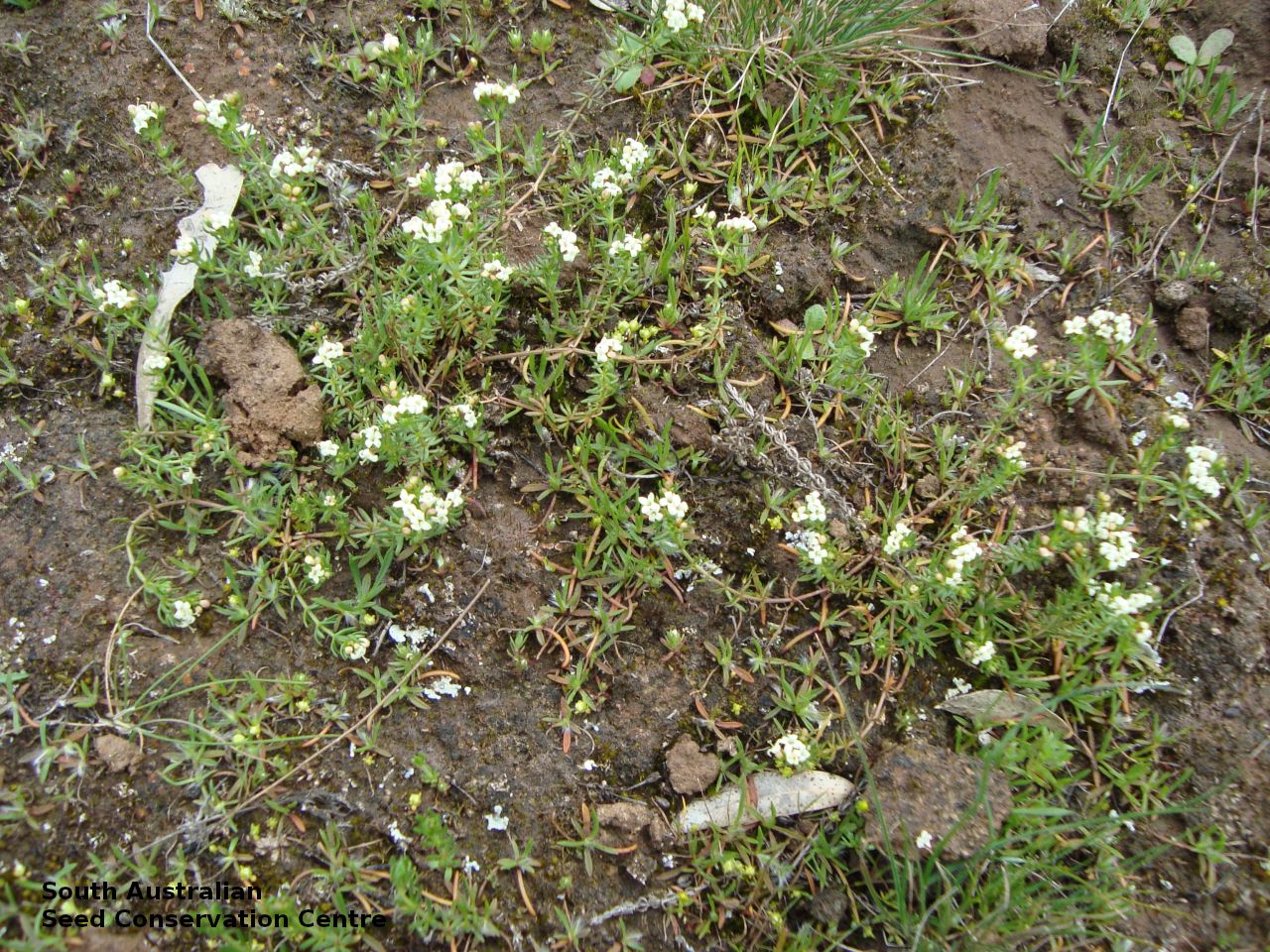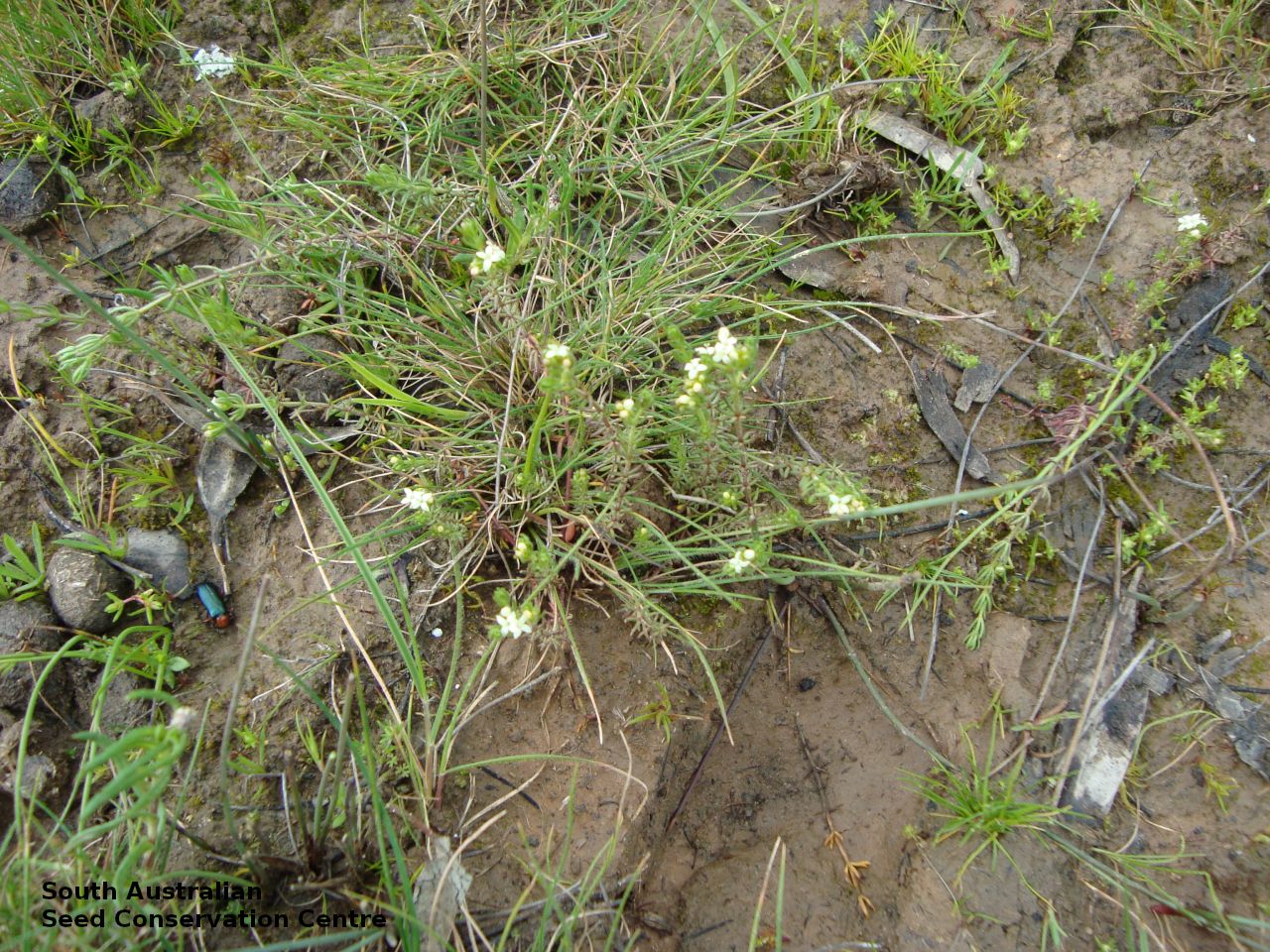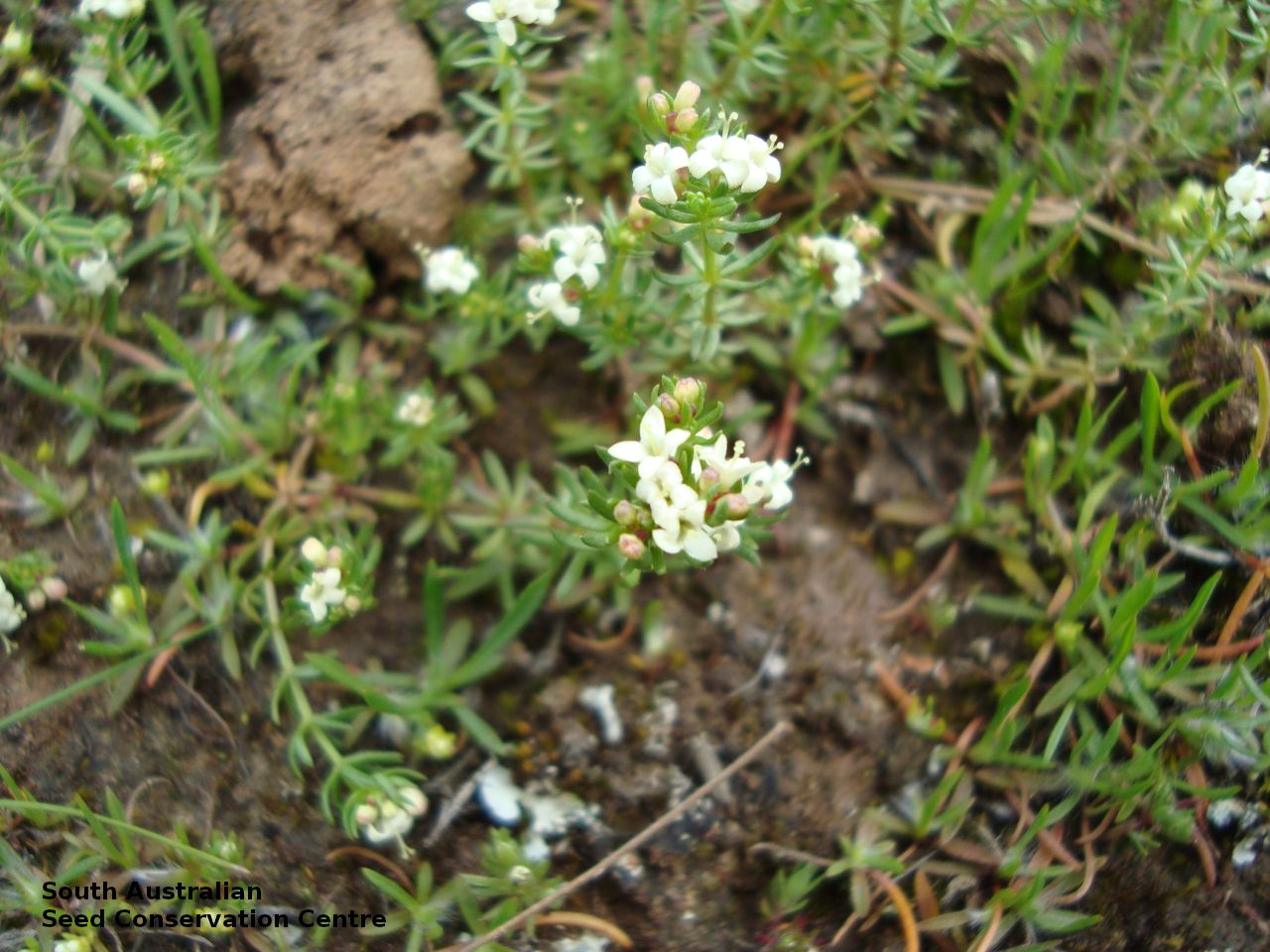




Prior names
Asperula oligantha, nom.illeg., partly
Common names
Wimmera Woodruff
Etymology
Asperula from the Latin 'asper' meaning rough, alluding to the stiff hairs on the leaves and stems. Wimmerana named after the Wimmera region in Victoria where the type specimen was collected from.
Distribution and status
Found in South Australian in the upper South-east, growing in woodland on heavier, water-retentive soils. Also found in New South Wales and Victoria. Native. Rare in South Australia. Rare in the other states.
Herbarium regions: Murray, South Eastern
AVH map: SA distribution map (external link)
Plant description
Tufted erect or decumbent perennial, with slender creeping rhizomes and slender but rigid stems to 20 cm long; scabrid to hispid with mostly recurved hairs. Leaves in whorls of usually 6, linear to 10 mm long and 1 mm wide; acute and often mucronate, upper surface glabrous to scabrid, lower surface scabrid with hairs mostly confined to midrib; margins recurved. Inflorescences terminal clusters with 1–3 white flowers as long as the leaves. Corolla to 3.5 mm long on male flowers and 2.5 mm long on females; corolla tube longer than lobes in male flowers, more or less equal to lobes in females. Flowering between August and October. Fruits are brown to black globular fruit to 2.0 mm diameter, rugose.
Seed collection and propagation
Collect seeds between October and December. Collect maturing fruits by picking off the clusters that are fat and turning brown or break off stems with numerous fruit clusters. Place the fruits in a tray and leave to dry for one to two weeks. Then rub the fruits with a rubber bung to dislodge the seeds. Use a sieve to separate the unwanted material. Store the seeds with a desiccant such as dried silica beads or dry rice, in an air tight container in a cool and dry place.